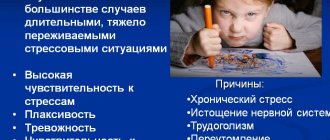Mnestic activity is the ability of the brain to record, remember any information, and reproduce it at the right time. The human brain has a well-developed ability to reproduce facts and events accurately.
But some people experience mental disorders. Why this happens and how to correct them will be discussed in the article.
Mnestic activity of man. Peculiarities
Mnestic activity is the work of the cerebral cortex aimed at the perception, systematization and sequential reproduction of information. Only humans have the ability to remember information that is not related to the direct perception of the world through the senses. However, it is feelings that are associated with attention.
The human brain constantly perceives and analyzes the incoming stream of signals. But as conscious beings, we can selectively fix our attention on the necessary areas of knowledge and remember abstract statements that do not have visual properties.
Processes of mnestic activity. Stages
The memorization process sequentially goes through several stages.
- Recognition of the material. It takes careful reading or listening to the material to leave some kind of trace in the brain.
- Then this trace must be fixed through volitional efforts.
- Systematization, when new knowledge is superimposed on existing knowledge in different brain structures and assimilated. At the same time, those blocks that do not correspond to previously learned material and marked as important, that knowledge is erased. This is necessary to ensure that internal “failures” do not occur in the playback system.
- Playback. The material that has been successfully integrated into the overall picture of the world built by the brain is securely stored in long-term memory.
It takes quite a lot of time to process new information. Few people have phenomenal mnestic abilities to quickly grasp and remember something forever. The brain also spends an incredible amount of energy.
The peculiarity of mnestic activity is that the perception mechanism is always at work. But for new neural connections to form, the body must have enough protein and neurotransmitters: dopamine, serotonin. In addition, you need at least 8 hours of sleep so that the brain is rested and can also successfully concentrate on systematizing what it has learned.
Classification according to the nature of mental activity
Individual characteristics of mnestic processes are characterized by what material is best absorbed: figurative, verbal, or both equally:
- Figurative memory. This is the ability to perceive and retain in memory certain visual images (ideas, pictures from life) and subsequently reproduce them; the type of memory is determined by a set of modality-specific sensations. This memory is plastic, can be long-term and appear unexpectedly. It is believed that its structure is made up of complex connections of neuronal units from different parts of the brain.
- Emotional memory. This type of memory is the result of fixations and new manifestations of emotional experiences; simply put, it is a memory for feelings. An impression that contains an emotional coloring is remembered instantly and without volitional effort, thus replenishing the structures of the human subconscious. This is a very stable mnestic type, the material of which can be reproduced completely involuntarily. Its biological basis presumably contains connections that combine subcortical neuronal links with links in different parts of the cerebral cortex.
- Semantic memory. This mnestic process correlates with the imprinting of verbal signs symbolizing what is happening in reality and internal experiences. Schematically, it represents series-connected linear links. If one of the links suffers, then this is fraught with a break in the entire chain, failure of the correct alternation of stored realities and erasing of certain fragments from memory.
You may be interested in:Battle of Granicus: causes, military strategy, course of events and results
Types of memory. Short-term and long-term memory
Mnestic activity is a special brain activity that allows you to learn to keep large amounts of information in your head for a long time; operate with concepts.
Memory is divided by modality into motor, emotional, figurative, verbal-logical. There is also a division into voluntary and involuntary.
Based on storage duration, memory is divided into instantaneous, short-term and long-term, or indefinite. Information that enters short-term memory, with constant fixation of attention on this material and repeated repetition, passes into long-term memory.
Intellectual-mnestic activity
Memorization is closely related to intellectual activity. And by training the intellect, we thereby develop memory.
Mnestic activity is the ability to learn new things and adapt to a changing reality. If you work in one job for many years and fulfill standard requirements, your intelligence decreases. A person must constantly study something, be interested in new trends in science, and have a developing hobby.
Children under 5 years of age develop very quickly. Their consciousness does not differentiate the incoming flow of information into “bad” and “good”, “profitable” and “unprofitable”. They perceive absolutely everything.
For the development of mnestic activity in children, it is important to communicate with them in a playful way. It is the game that develops intelligence, not memorization.
Mnestic activity is development. As soon as a person stops training his intellect and establishing new connections between neurons, the aging mechanism of the brain and the whole organism is triggered.
Relationship between attention, intelligence and memory
The processes of mnestic activity are determined by the ability to voluntarily maintain attention on one object. Attention is a program that ensures that information that needs processing is retained in the field of consciousness. Weak control of attention is the key to the fact that it is difficult for a person to remember facts; even with good intelligence, he will not be able to achieve success in his profession.
Also with low intelligence. Even good attention, the ability to focus for a long time on one object will not help develop good memory if the intellect is poorly developed.
Elementary and specific mnestic processes
In neuroscience, it is customary to distinguish between elementary and specific mnestic processes. Elementary ones (sensitization, conditioned reflex) are present even in primitive animals. Specific ones are inherent in more advanced, multilayer types of memory.
Modal-specific mnestic processes are those that are associated with the functioning of various sensory systems. Based on this, the corresponding types of memory are distinguished: visual, auditory, tactile, olfactory, motor. A modality-specific type of memory often becomes necessary in professional activities (auditory memory of people involved in music).
Memory research methods
As has been said, memory can be voluntary or involuntary; and by shelf life - short-term and long-term. To study the properties of involuntary memory, subjects were asked to do light work. And upon completion of its implementation, they were asked to tell about the main stages, about what was remembered most vividly.
Short-term memory is studied in more detail. The subjects are tested for the ability to remember objects of different modalities and for the duration of retention of this information. The amount of short-term memory is also important. Each subject has special properties. But research allows us to identify general patterns - why we remember some thoughts and facts well, and why we forget others.
The classic method for studying memory was invented by psychologist Hermann Ebbinghaus. To test memory, he suggested using syllables that were absolutely meaningless. The inability to make any associations or apply one’s intellectual abilities makes it possible to determine the pure amount of “technical memory”. That is, that reservoir in the brain where information is stored only for some urgent task.
Mechanisms of regulation and imprinting
The recording of new information goes through three stages in time: initially, based on the work of the visual, auditory and tactile analyzers, an engram is formed, that is, a special trace in the iconic memory. At the next stage, the available data is sent to the higher authorities of the brain. In certain cortical structures and parts of the limbic system, the incoming material is analyzed and sorted.
It is known that the hippocampus acts as a kind of filter, classifying all this and discarding what is unnecessary, and the task of the temporal region is to establish relationships with areas where engrams are stored from other parts of the brain. At the last stage, all this is translated into a clear circuit of long-term memory.
Memory impairment. Causes
When a person during a study cannot remember 4 objects or words out of 10, researchers can note disturbances in mnestic activity. The causes of memory failures can be physiological or psychological.
Let's try to understand the cause-and-effect relationships that lead to a deterioration in the ability to perceive, analyze and remember information^
- Exhaustion of the nervous system due to stress or neurosis.
- Severe damage to the frontal lobes of the brain due to injury or stroke.
- Consequences of infectious diseases (meningitis, arachnoiditis) affecting the structure of the brain.
- Affective-emotional instability.
- Congenital brain abnormalities. Such as schizophrenia, childhood autism or dyslexia.
- Inability to regulate attention, lack of focused effort.
Functional memory disorders, which are based on prolonged neurosis or attention disorders, are treated with the help of a psychologist. But more serious disorders require long-term treatment. Moreover, late treatment often leads to the fact that it becomes impossible to eliminate the disorders.
Patients with portal hypertension are characterized by neuropsychic disorders of an episodic nature: paracosismal states with polymorphic disorders, sometimes with changes in consciousness and autonomic disorders, periodic tremor of the hands, episodes of daytime sleepiness, attacks of cephalalgia, cramps. These disorders are more common in patients with surgically performed vascular anastomosis and chronic encephalopathy. Gubsky (1970) points out that intellectual-mnestic disturbances can have diagnostic value in the study of chronic HPE. The AUTHOR conducted an experimental psychological examination of patients using methods for studying memory, thinking, and the rate of motor reactions. An experimental psychological examination of patients showed that they are characterized by a decrease in memory, expressed in disruption of the learning process and a drop in the productivity of long-term retention of material. When studying thinking, changes in its operational side were revealed, which was expressed in a decrease in the level of generalizations, and in some cases in their distortion (Zeigarnik, 1962). Intellectual-mnestic disorders were found mainly in patients with the intrahepatic form of portal hypertension. Kardell et al. (1970) used a battery of psychological tests to assess the degree of cognitive decline in 34 patients with portal hypertension after surgical portacaval anastomosis. Unfortunately, the authors did not conduct a structural analysis of the identified disorders, but limited themselves to a general assessment of the success of the tests used, noting only that in chronic HPE, unlike alcoholic encephalopathy, there is no selective memory loss. This feature of the psychoorganic syndrome in GPE was noted even earlier by Vicfor (Vicfor et al., 1965), who used a set of Wechsler psychological tests. The results obtained by various authors indicate disturbances in the dynamics of mental processes, which were revealed in fluctuations in attention, exhaustion of patients, decreased ability to concentrate, instability of performance, inertia of thought processes, and disturbances in the productivity of the associative process. Along with changes in dynamics, specificity of thinking, difficulties in making complex generalizations, and the tendency of patients to detail are described. Such violations of cognitive activity are qualified in the pathopsychological literature as violations of the operational component of thinking (Zeigarnik, 1962, 1976). The degree of severity of disturbances in mental activity depends on the severity of the condition, duration and intensity of intoxication and is an objective characteristic of somatogenic encephalopathy (Tsivilno, 1970, 1977; Tsivilno, Gudkova, 1972; Kareva et al. 1979). As we see, the psychological aspects of the problem are poorly developed. At the same time, the clinic of chronic somatic diseases poses a number of questions to psychologists. One of them: how does the disease and treatment affect the patient’s personality? Most often, patients become aware of their illness and become irritable and depressed. Here the help of a psychiatrist and psychologist is needed, their choice of an adequate psychotherapeutic effect on the patient. The use of hemodialysis has made it possible to prolong the lives of those who previously died from uremia and to prepare for kidney transplantation. But the use of hemodialysis also posed a number of problems: the patient must decide to be treated with hemodialysis, and this leads to the problem of dependence on the artificial kidney machine, fear of the first hemodialysis, waiting for the installation of an arteriovenous shunt, etc. The “artificial kidney” device is far from perfect; useful substances (potassium, vitamins, etc.) are also removed from the body along with toxins. In this regard, issues of the influence of hemodialysis on the mental and somatic state of the patient must be resolved. Another question is the question of the attitude of patients to their illness, to the fact of receiving disability. It has been established that among patients, as a rule, there are two groups: patients who have completely “sunk” into the disease, and those who want to continue working and not be cut off from life. Psychologists also face the difficult problem of social and labor readaptation and rehabilitation of patients. And the solution to this issue is impossible without studying the cognitive sphere of patients.
CRF – previous page|next page – memory impairment
The impact of chronic illness on the psyche. Content.
Dyslexia due to memory impairment in children
Impaired memory of words and objects, difficulties with speech in early childhood may be associated with dyslexia. This is a special disorder of mnestic activity associated with a congenital anomaly in the region of the language center of the brain.
With this syndrome, the child experiences difficulty perceiving speech and dividing the flow of sounds into its component parts. Naturally, the development of memory and thinking in such children is slowed down. Studies of mnestic activity in children show that working with them, communicating, and pointing out errors of perception contribute to recovery from the syndrome.
It happens that the cause of difficulties in mastering writing is associated with visual-perceptual disorders.
General principles of therapy for mnestic disorders
Disorders of mnestic processes quite often respond to drug therapy, as well as other methods of treatment. Options for their use depend on the specific diagnosis; in particularly severe cases, at least relief of symptoms is possible. The basic therapeutic regimen is built on the following principles:
- relief of an acute condition (for psychosis, trauma);
- consumption of vitamins;
- treatment with psychotropic drugs (tranquilizers, antipsychotics);
- correction of cerebral circulation (nootropics: “phenibut”, “phenotropil”, “mexidol” and others).
In addition to the main treatment, the following are prescribed:
- balanced diet;
- medicinal herbs (valerian, ginger, motherwort);
- cognitive development of memory (various hobbies, memorizing poetry, mastering new languages, educational games);
- individual work with a psychotherapist.
Correction
Problems with memory have a negative impact on your studies and career. What can you do to improve your memory? There are several methods for correcting mnestic activity:
- If a person works with information, he needs to constantly get enough sleep.
- Take breaks during the learning process. The brain needs to rest and “reboot.”
- Organize material to make it easier to comprehend and remember. Build tables, pictures, diagrams.
- Use associations when learning.
- Remember more often the poems you taught at school.
To improve memory ability, it is recommended to take brain vitamins. These are Omega-3, glycine, all B vitamins.
If there are serious disturbances in the functioning of the cerebral cortex due to injury, more serious chemicals and treatment under medical supervision are required.










